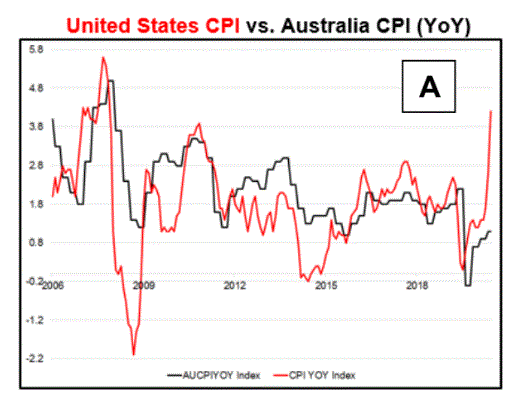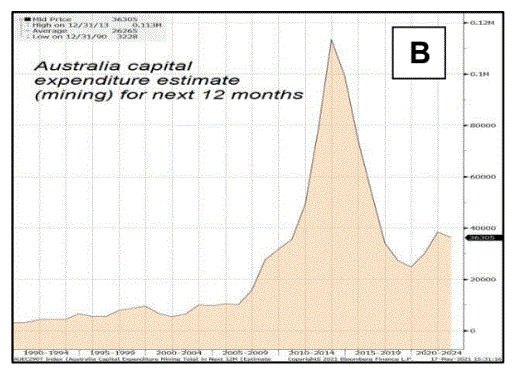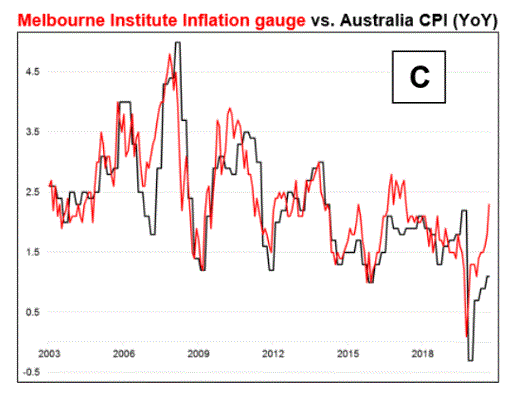HSBC with the note. Some good themes. My view remains dirt will break before the RBA:
Yesterday I talked about AUD headwinds and I mentioned that AUD trades poorly relative to its terms of trade. ToT is near all-time highs touched in 2007 and 2011 while the currency can’t even get above its 2018 high.
Dom emailed me with a good point. The answer here is probably fairly simple: There has been no transmission from terms of trade toAU yields and therefore there is no reason for AUD to go higher (yet). In other words, it’s not terms of trade that drives AUD but the impact terms of trade has on rates. In the past, ToT swings have led to interest rate swings. This time, not so much.
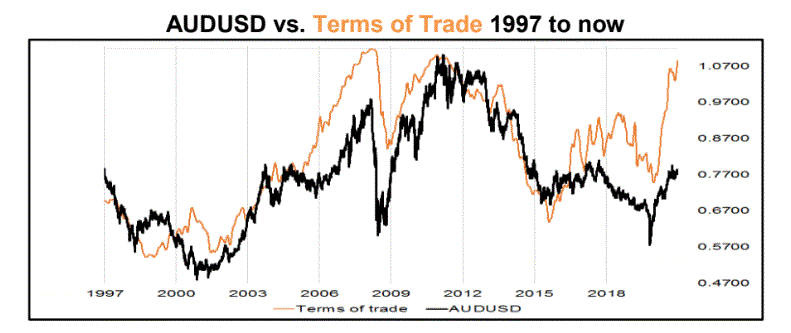
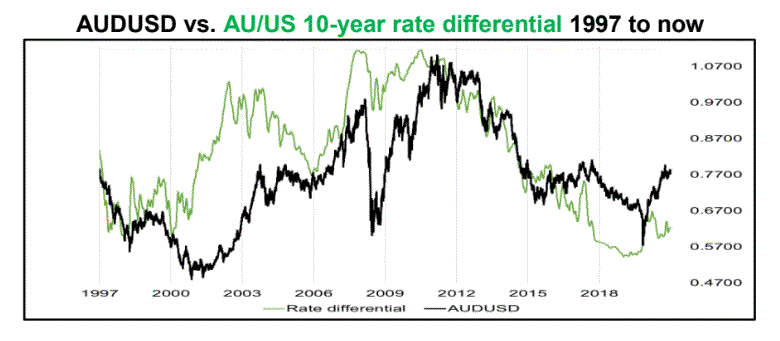
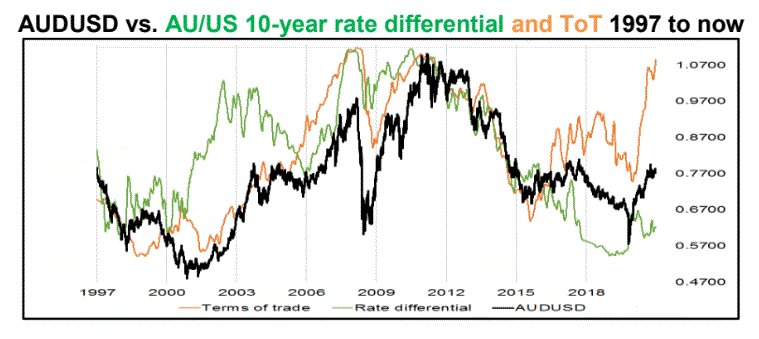
This is the inverse of the bearish US dollar trade that most of us had on to start 2021. The thought in that case was that transmission between fiscal spending and the USD would break down due to a very loose Fed. Unfortunately for dollar shorts, Mundell-Fleming was in full force and despite the Fed anchor in the front end, back end US yields rose in response to multi-trillion-dollar fiscal stimulus and as 10% GDP growth loomed on the horizon, the USD rallied throughout Q1.
Here is how I’m thinking about AUD going forward:
1. The“surprising” weakness in AUD is mostly explained by the unwavering AU/US yield differential. Aussie rates are just matching US rates…No more no less.
2. AUD is a push and pull between low rates and rising commodities. If commodities turn lower or the RBA starts to taper, the stalemate will break and AUD can move aggressively out of the tedious 0.76/0.79 range that has dominated most of 2021.
3.When the RBA signals the start of its tapering operation, AUD might do a CAD imitation and rip through 0.8000 as AU rates should zoom higher relative to those of the USA. The timing of higher inflation in Australia is anyone’s guess but the direction seems fairly clear. As US inflation heads toward Mars, it almost certainly suggests higher AU inflation is coming. Many inflationary winds are global.
4.It’s not 100% about rates. There is a major difference between the commodity booms in 2007 and 2011 and the current commodity bull market. During the first two periods, rising commodity prices spurred a huge jump in CAPEX as Australia built out mining capacity. That spurred jobs and economic growth in Australia. This time, it’s more about monetizing productive capacity and firing off gigantic dividends to investors. It is less about positive impact on the real economy. You can see the difference in capex if you look at Chart B. There,I show 12-month forward Aussie capex spending expectations since 1990.
5. The less-watched experimental monthly inflation gauge for Australia (from the Melbourne Institute)has already turned aggressively higher. You can see that in ChartC where I compare the unofficial monthly figure with the official quarterly data.
6.Aussie inflation data has never been more important. Next release is July 27. Watch China and US CPI for clues in the meantime.
Commodities lower or AU yields higher? Which variable will break the stalemate?
